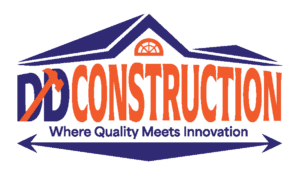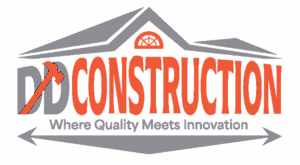Upgrading your Windows operating system is more than just installing a newer version—it is a comprehensive home improvement for your digital workspace. For homeowners looking to boost efficiency and longevity while integrating the latest applications and devices, a Windows upgrade is much like replacing old windows with high-performance, energy-saving units, a process often recommended by ddconstructionma.com. Just as new home replacement windows brighten a room, lower utility costs, and enhance curb appeal, the latest Windows is engineered to optimize system performance, improve security, and offer user-friendly interfaces with customizable layouts and intuitive workflows.
In today’s rapidly evolving digital world, staying up-to-date with your operating system is essential. Windows upgrades are tailored to modern hardware, incorporate cutting-edge security protocols, and leverage new software advancements. Users in Rehoboth, MA, and surrounding areas recognize that home improvement isn’t solely about aesthetics but also about maintaining energy efficiency and long-term savings. With features such as enhanced performance metrics, multitasking capabilities, and advanced cloud connectivity, a Windows upgrade delivers a stable, secure, and productive computing environment—similar to installing energy efficient windows that save on heating and cooling costs while contributing to a more sustainable home.
For professionals and consumers alike, the decision to upgrade is based on both short-term benefits and long-term cost savings. Windows 11, for instance, goes beyond visual enhancements by introducing a dynamic productivity center, refined security protocols, and improved compatibility with diverse hardware and software. The upgrade minimizes downtime, safeguards personal data against modern digital threats, and ensures legacy applications run smoothly. Whether you’re a power user, a creative professional, or a family relying on your PC daily, upgrading your Windows environment is an investment that enhances efficiency and provides integrated support. This digital transformation mirrors the improvements seen with quality home windows replacement in Massachusetts.
For those seeking reliable home improvements, understanding the technical and practical benefits behind a Windows upgrade provides reassurance that every dollar spent translates into tangible benefits—increased performance, robust security, smoother user experiences, and better compatibility with emerging tools. The following sections discuss these advantages using detailed lists, tables, and examples.
Why Should You Upgrade to the Latest Windows Version?
Upgrading to the latest Windows version unlocks numerous benefits designed to enhance performance, security, user experience, and compatibility. Much like updating home replacement windows to boost energy efficiency and curb appeal, the new Windows optimizes your computer’s functionality, delivering a more responsive, efficient, and secure environment.
What Are the Key Benefits of Upgrading Windows?
Upgrading improves system responsiveness, efficiency, and reliability. Key benefits include: – Enhanced Performance: Faster boot times, better resource management, and improved multitasking. Modern Windows uses optimizations like DirectStorage and improved memory management, offering performance boosts in high-demand tasks. – Revamped Interface: Integrated apps and updated interfaces allow quick access to essential tools, similar to reconfiguring a home layout to maximize natural light and convenience. – Longer Hardware Life: Better resource management reduces overheating and component wear, paralleling energy-efficient home windows that lower bills and protect your house.
How Does Upgrading Improve Windows Performance?
The latest Windows is built on frameworks that streamline CPU/GPU operations, reduce background processes, and optimize task scheduling. These tweaks enable smoother transitions between applications and faster system boot times. Enhanced support for modern hardware—such as high-speed NVMe storage, multi-core processors, and integrated graphics—ensures improved performance in tasks like video editing, gaming, and heavy multitasking. Additionally, advanced power management adjusts CPU speed and voltage for better performance and energy savings.
What New Features Does Windows 11 Offer Compared to Older Versions?
Windows 11 introduces several modern features: – Modern Interface: A centered Start menu, updated taskbar, rounded window corners, and new virtual desktops create distinct work and play environments. – Advanced Security: Enhanced by hardware-based isolation and encryption protocols, along with features like Snap Layouts and Snap Groups for efficient screen management. – Expanded App Support: A revised Microsoft Store supports both traditional and Universal Windows Platform apps. Overall, Windows 11 improves system security, process efficiency, and hardware compatibility.
How Does Upgrading Windows Enhance Security?

Upgrading Windows significantly boosts security by incorporating modern protocols and technologies. Just as energy-efficient windows protect against environmental damage, a Windows upgrade secures your digital space with advanced encryption, proactive threat prevention, and robust authentication systems.
What Security Improvements Come With Windows Upgrades?
New Windows versions integrate: – Advanced Security Architecture: Including Secure Boot, hardware-based isolation, and virtualization-based security to reduce vulnerabilities. – TPM 2.0 Support: Ensures sensitive data like passwords and encryption keys are stored securely. – Real-Time Monitoring: AI-powered monitoring continuously analyzes system behavior, while regular patches reduce risks from malware, ransomware, phishing, and zero-day exploits. – Comprehensive Credential Management: Enhanced network security protects sensitive financial and personal data, offering users peace of mind.
How Does Upgrading Protect Against Modern Cyber Threats?
Upgrading to a newer Windows provides: – Advanced Exploit Mitigations: Reducing risks such as buffer overflow and code injection attacks. – Biometric Authentication: Features like Windows Hello improve security through secure biometric access. – Cloud-Powered Backups: Automatic backups of critical settings enable rapid recovery. – Improved Network Protocols: Advanced encryption standards protect against man-in-the-middle attacks and data interception.
Why Is Ongoing Support Important After Upgrading Windows?
Post-upgrade support ensures your operating system stays current. Regular updates, technical support, and community feedback allow quick patch adoption as threats evolve. Continuous updates maximize performance and prolong security benefits, making ongoing maintenance essential for a robust computing environment.
What Are the Compatibility Benefits of Upgrading Windows?
Upgrading Windows enhances overall compatibility with contemporary hardware and software. As new peripherals and applications emerge, an upgraded system ensures legacy data and devices remain supported—similar to how modern window replacements work with traditional designs while delivering superior energy performance.
How Does Upgrading Improve Hardware Compatibility?
The latest Windows version offers: – Refined Drivers and Kernel Improvements: Supporting cutting-edge processors, high-speed storage, and graphics cards. – Enhanced Plug-and-Play Experience: Simplifies installing peripherals from printers to smart home devices. – Improved Power Management: Optimizes the performance of multi-core processors, balancing speed with energy efficiency, ensuring new hardware investments perform optimally.
What Software Compatibility Improvements Come With Windows Upgrades?
Upgraded Windows provides broad software compatibility: – Legacy and Modern Applications: Compatibility modes allow legacy programs to run seamlessly alongside modern apps. – Curated App Selection: The updated Microsoft Store offers a range of optimized applications. This minimizes errors and system crashes, contributing to a stable computing experience. – Smooth Transition for Business Systems: Enhanced compatibility facilitates updates of critical business software without introducing bugs or crashes.
How Does Upgrading Affect Legacy Software and Devices?
Built-in support features and compatibility layers in the new Windows version mean: – Continued Functionality of Legacy Software: Virtual environments and compatibility settings allow essential older applications to run securely. – Backward Compatibility: Many older devices benefit from improved plug-and-play functionality, reducing driver conflicts and ensuring reliable operation even for legacy peripherals.
What Are the Cost Considerations When Upgrading Windows?

Upgrading Windows involves certain expenses that must be weighed against long-term savings and productivity gains. Much like investing in energy-efficient windows—with higher initial costs offset by long-term benefits—a Windows upgrade offers immediate improvements and lasting financial gains.
How Much Does Upgrading Windows Typically Cost?
Costs vary based on license type and additional needs: – Licenses: Many users may be eligible for free or discounted upgrades if they already own a valid license. New licenses range from $100 to $200 depending on the edition (Home or Pro). – Hardware Upgrades: Older systems might need additional upgrades (RAM, storage, graphics cards) to fully benefit from the new OS. – Professional Services: Optional installation and data migration services add to the cost but reduce downtime and ensure a smooth transition. – Subscription Models: Enterprises may consider volume licensing or subscription models like Windows 365 for cost-effective solutions at scale.
What Are the Long-Term Savings From Upgrading Windows?
Long-term benefits include: – Efficiency Gains: Faster processing and reduced power consumption lower overall operating costs. – Reduced Downtime: Improved reliability and lower maintenance costs boost productivity. – Enhanced Security: Fewer breaches reduce potential financial losses. – Energy Savings: Optimized power management may reduce electricity bills by up to 15%.
Are There Free or Discounted Upgrade Options Available?
Many users can benefit from free updates or significant discounts: – Customer Eligibility: Microsoft often offers free upgrade paths for qualified devices. – Special Discounts: Educational institutions, non-profits, and government organizations frequently receive additional benefits. – Bundled Offers: Some vendors bundle the upgrade with hardware or professional support services, reducing overall costs.
Below is a table summarizing typical cost considerations versus long-term savings:
| Cost Factor | Short-Term Expense | Long-Term Savings/Benefit | Example Scenario |
|---|---|---|---|
| New Windows License (Home) | $100 – $140 | Free upgrades for eligible users | Student upgrading without additional cost |
| New Windows License (Pro) | $150 – $200 | Enhanced security and stability | Business requiring advanced management features |
| Hardware Upgrades | $200 – $500+ | Improved performance and longevity | Upgrading RAM/SSD reduces future replacement costs |
| Professional Installation | $50 – $150 | Minimized downtime and optimized configuration | Timely installation during off-peak hours |
| Support & Maintenance | $20 – $50/month | Lower IT support costs and faster resolution times | Subscription for ongoing updates and support |
How Does Upgrading Windows Improve User Experience?
Windows is designed to deliver an unparalleled user experience. Like home improvements that enhance both aesthetics and comfort, upgrading Windows introduces interface enhancements, intuitive task management, and personalization options that streamline daily workflows—benefiting both individuals and professionals.
What User Interface Enhancements Come With Windows 11?
Windows 11 features a redesigned, clutter-free interface: – Centered Start Menu and Taskbar: Positions essential apps prominently. – High-Resolution Visuals: Smoother animations and enhanced touch support create an engaging experience. – Customization: Options for themes, icon arrangements, and wallpapers allow users to personalize their workspace, much like choosing decor to suit your home.
How Does Upgrading Simplify Daily Tasks and Workflows?
Integrated tools in Windows 11 simplify daily operations: – Snap Layouts and Snap Groups: Allow quick organization of open applications. – Enhanced Virtual Desktops: Enable creating distinct workspaces to reduce clutter and improve focus. – Efficient Start Menu: Prioritizes frequently used applications, shortening navigation time and improving overall productivity.
What Customization Options Are Available After Upgrading?
Users can personalize their system extensively: 1. Personalized Themes: Adjust system colors, backgrounds, and accents. 2. Advanced Icon Layouts: Organize desktop shortcuts for quick access. 3. Custom Dock and Taskbar: Modify positions and transparency. 4. Dynamic Wallpapers: Change based on time or activity. 5. Virtual Desktops: Create separate desktops for varied tasks. 6. Accessibility Settings: Tailor display options for enhanced readability. 7. Notification Preferences: Manage alerts to reduce distractions.
What Is the Process of Upgrading Windows and How Is Data Migration Handled?

The Windows upgrade process is structured to ensure a smooth, efficient transition with minimal disruption. It involves careful planning, secure data migration, and thorough post-upgrade support.
How Do You Prepare Your System for a Windows Upgrade?
Preparation involves: – Hardware Check and Backup: Assess system compatibility and back up all personal data using cloud storage or external drives. – Driver Updates and Diagnostics: Update drivers and run system health tests to resolve issues before upgrading. – Review Guidelines: Follow Microsoft’s upgrade guidelines and allocate sufficient time for an uninterrupted process.
What Steps Are Involved in the Windows Upgrade Process?
The process includes: 1. Download and Installation: The system downloads installation files, verifies configuration, and performs necessary reboots. 2. System Configuration: New system settings are applied and updated. 3. Driver Updates and Compatibility Checks: Ensures all hardware components work seamlessly with the new OS. 4. User Data Migration: Files, applications, and settings are securely transferred. 5. Final Testing and Optimization: Diagnostics confirm that all components function properly post-upgrade.
How Is Data Migration Managed During the Upgrade?
Data migration is handled through an automated wizard that: – Transfers Data Securely: Moves user profiles, settings, and applications. – Minimizes Data Loss: Users are advised to back up data to create a restore point. – Provides Manual Overrides: Advanced users can adjust settings for greater control.
What Post-Upgrade Support Is Available to Ensure a Smooth Transition?
Post-upgrade, support is provided via: – Regular Updates and Patches: To fix bugs and enhance performance. – Technical Support Options: Online help, community forums, and professional services. – Training Sessions: To help users adapt to the new features. – Ongoing Diagnostics: To ensure continued stability and optimal performance.
Why Choose Professional Windows Upgrade Services?
Due to the complexity and risks involved in upgrading an operating system, many users opt for professional Windows upgrade services. These services ensure minimal downtime and seamless integration, much like hiring a top-rated contractor for home improvements.
How Do Experts Minimize Downtime During Windows Upgrades?
Professional services: – Conduct Pre-Upgrade Diagnostics: To identify and address issues early. – Schedule Off-Peak Installations: Reducing disruption during busy hours. – Use Automated Tools: For rapid data migration and driver updates.
What Customization Options Do Professional Services Offer?
Professionals provide: – Personalized Configuration: Tailoring system settings based on individual needs. – Optimized Integration: Ensuring smooth incorporation with existing hardware and software. – Enhanced Security Setup: Pre-installing security updates and configuring backups. – Comprehensive Post-Upgrade Support: Including troubleshooting and ongoing maintenance.
How Does Professional Support Enhance Security and Performance?
Professional support ensures: – Proactive Security Measures: Timely security patches, antivirus setups, and firewall configurations. – Rigorous Post-Upgrade Testing: To detect and resolve performance bottlenecks. – Ongoing Technical Assistance: For continuous updates and immediate resolution of issues.
Below is a summary list of the benefits of professional Windows upgrade services: 1. Reduced Downtime – Faster turnaround minimizes productivity loss. 2. Personalized Configuration – Customized settings meet specific user requirements. 3. Enhanced Security – Advanced security measures are pre-installed. 4. Optimized Performance – Post-upgrade diagnostics ensure peak system performance. 5. Reliable Data Migration – Secure, automated transfer of all essential data. 6. Ongoing Support – Continuous technical assistance and updates. 7. Seamless Integration – Smooth compatibility with existing hardware and legacy software.
Detailed Lists and Data Tables
List 1: Key Benefits of Upgrading Windows
- Enhanced Performance – Faster operations and lower latency Upgrading improves processing speeds and reduces lag using efficient drivers and frameworks.
- Advanced Security – Robust protection against cyber threats New features like TPM 2.0 and hardware isolation secure sensitive data.
- Improved Compatibility – Better support for modern hardware Ensures optimal performance with NVMe SSDs, high-speed RAM, and new peripherals.
- User Interface Enhancements – A modern, intuitive desktop experience A redesigned Start menu and customizable themes offer a personalized experience.
- Energy Efficiency – Lower power consumption and extended hardware life Improved power management lowers utility bills.
- Integrated Cloud Services – Seamless access to online tools Enhanced cloud connectivity supports remote work and data backups.
- Ongoing Support – Continuous updates and security patches Regular maintenance ensures the system remains secure and up-to-date.
List 2: Steps Involved in the Windows Upgrade Process
- System Backup and Compatibility Check – Secure critical data and test system readiness.
- Downloading the Upgrade Files – Automatic retrieval of installation packages.
- Installation Execution – Replacement of old system files through multiple reboots.
- System Configuration – Adjustment of settings for optimal operation.
- Driver and Software Updates – Ensuring compatibility and avoiding conflicts.
- User Data Migration – Secure transfer of files, applications, and settings.
- Post-Upgrade Diagnostics – Final testing to confirm system functionality.
List 3: Customization Options Available After Upgrading
- Personalized Themes – Customize colors, backgrounds, and accents.
- Advanced Icon Layouts – Arrange desktop shortcuts for efficient access.
- Custom Dock and Taskbar Settings – Modify positions and transparency.
- Dynamic Wallpapers – Set backgrounds that adapt to time or activity.
- Virtual Desktops – Create separate workspaces for different tasks.
- Accessibility Features – Adjust text size, contrast, and input options.
- Notification Controls – Manage alerts to reduce distractions.
List 4: Benefits of Professional Windows Upgrade Services
- Minimized Downtime – Quick installation during off-peak hours.
- Custom Configuration – Settings tailored to user-specific needs.
- Enhanced Security Measures – Pre-installed security updates and configurations.
- Optimized Performance – Detailed diagnostics and adjustments post-upgrade.
- Seamless Data Migration – Reliable transfer of all files and settings.
- Comprehensive Support – Ongoing technical support and updates.
- Expert Troubleshooting – Immediate resolution of post-upgrade issues.
Table 1: Cost Considerations Versus Long-Term Savings
| Cost Factor | Short-Term Expense | Long-Term Savings/Benefit | Example Scenario |
|---|---|---|---|
| New Windows License (Home) | $100 – $140 | Free upgrade options for eligible users | Student upgrading without added cost |
| New Windows License (Pro) | $150 – $200 | Enhanced security and system stability | Business requiring advanced management features |
| Hardware Upgrades | $200 – $500+ | Improved performance and longer hardware life | Upgrading RAM/SSD reduces future replacement costs |
| Professional Installation | $50 – $150 | Minimized downtime and optimized configuration | Off-peak installation minimizes disruption |
| Support & Maintenance | $20 – $50/month | Lower IT support costs and faster resolution times | Subscription for ongoing technical support |
Note: Initial expenses are offset by long-term savings from efficiency gains, reduced downtime, and improved security.
Table 2: Key Features Comparison Between Windows Versions
| Feature | Older Windows Version | Latest Windows Version | Benefit / Improvement |
|---|---|---|---|
| User Interface | Traditional layout | Modern, centered layout | Enhanced usability and aesthetics |
| Security Protocols | Basic protection | Hardware isolation, TPM 2.0 | Superior data protection and threat mitigation |
| Performance Optimizations | Limited multitasking | Advanced task management, DirectStorage | Faster processing and efficiency |
| Hardware Compatibility | Limited support | Extensive compatibility | Future-proofing with next-gen technology |
| Customization Options | Fewer personalization | Rich customization | Personal, adaptable user experience |
| Integration with Cloud Services | Basic integration | Seamless connectivity | Enhanced remote work and reliable data backup |
| Energy Efficiency | Moderate saving | Optimized power management | Lower energy consumption and reduced bills |
Table 3: Post-Upgrade Support and Maintenance Benefits
| Support Component | Offered by Older Systems | Offered by Upgraded Systems | Benefit / Improvement |
|---|---|---|---|
| Software Updates | Infrequent, manual | Regular, automatic | Timely patching and reduced vulnerabilities |
| Technical Support Access | Limited | 24/7 online and professional | Faster resolution of issues |
| Driver Compatibility Updates | Delayed | Enhanced, real-time | Seamless hardware integration |
| Security Patches | Periodic | Continuous, proactive | Constant protection against emerging threats |
| User Training/Guides | Basic documentation | Comprehensive tutorials | Better adaptation to new features |
| Customization Assistance | Minimal | Expert assistance | Tailored digital environment optimization |
| System Diagnostics | Manual checks | Automated, integrated | Early detection and prevention of performance issues |
Investing in post-upgrade support enhances overall user experience by reducing downtime and ensuring sustained system efficiency.
Frequently Asked Questions
Q: What immediate improvements can users expect after upgrading to the latest version of Windows? A: Users can expect faster performance, a modern and intuitive interface, enhanced security measures with hardware-backed protections, and improved compatibility with modern devices and software. Features like dynamic virtual desktops and automated updates contribute to a more stable system.
Q: How does upgrading Windows help in reducing cybersecurity risks? A: Upgrading brings advanced security protocols such as TPM 2.0 and hardware isolation, along with continuous, automated security patches. Combined with improved encryption and threat detection, these measures significantly reduce the risk of breaches and cyberattacks.
Q: Are there any risks associated with upgrading Windows, and how can they be mitigated? A: While risks such as potential data loss or compatibility issues exist, thorough system preparation—backing up data, updating drivers, and using professional services—greatly minimizes these risks. Microsoft’s migration tools and ongoing support further ensure a smooth transition.
Q: What compatibility concerns might arise with legacy software during a Windows upgrade? A: Legacy software may sometimes face compatibility issues with new system frameworks. However, modern Windows versions provide compatibility modes and virtualization options to allow critical legacy applications to run properly, with professional support available if issues arise.
Q: How do professional Windows upgrade services enhance the overall user experience compared to DIY upgrades? A: Professional services reduce downtime with scheduled upgrades, ensure seamless data migration, and provide personalized system configurations. They also offer enhanced security setups, ongoing support, and expert troubleshooting, resulting in a smoother, more reliable upgrade experience.





